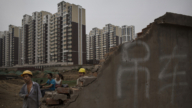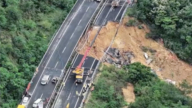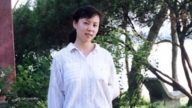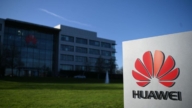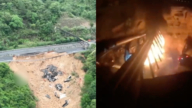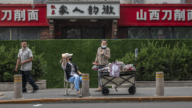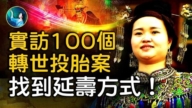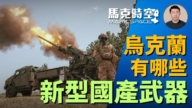【新唐人2011年7月27日讯】7月23号晚上 8点27分发生的福建温州动车惨案,不仅让神州大地为之哀痛,也成为国际社会聚焦的热点。曾经向中国高铁建设提供了技术转让的日本,对事故给予极大关注。25号,日本外务副大臣伴野丰向中共当局提出:要认真查明事故原因。有学者指出,日本高铁49年未发生死亡事故,即便是小事故,也会耗费数个月以上的时间认真调查,不会草率解决。
温州动车惨案发生后,事故的原因分析成了各界舆论的焦点。大陆铁道部新闻发言人王勇平24号表示,初步了解,追尾事故的原因是雷击造成设备故障导致的。
日本媒体25号报导说,发生追尾的列车很可能是由日本“川崎重工”提供技术的CRH2型列车。
不过,日本《朝日新闻》援引日本铁路公司“新干线”技术人员的话报导说,中国高铁采用的日本技术只有车辆,信号等“运行系统”是中国独自开发的。这位技术人员分析,如果事故是“追尾”造成的,原因就不是“车辆”而很有可能是“运行系统”的故障。
日本外务副大臣伴野丰25号在记者会上就“动车追尾事故”表示说:“中国(共)政府应该查明原因努力防止再次发生事故。”
24号凌晨4点,事故发生仅8个小时后,铁道部就声称搜救结束,并将追尾列车的车头掩埋。 24号下午 5点50分左右,两岁半女童项玮伊被发现并获救。
铁道部的举措引发了强烈的舆论质疑。伴野丰也就此表示,希望中方改善应对措施。
“当代中国研究中心”的学者杨中美对《美国之音》说,日本高铁近半个世纪,也没有死人事故发生。即便发生其它故障,也是每次数个月、半年甚至一年的时间寻找问题,直到解决为止。
日本民众春野小姐觉得难以理解。她说,在日本是根本不会发生这样的事情。
日本春野小姐:“绝对不会的,这是常识吧,不是重要的证据吗?损坏了这么重要的证据,会让人怀疑是不是打算好好调查。”
在大陆新浪微博的民调也显示,认为当局这个举动的目地是“毁灭证据”的占98%。
而在事故发生34小时后,事故路段25号恢复全面通车。
日本春野小姐:“事故发生还没过38小时,许多事情还没弄明白,就重新开始通车,连客人的生命安全都不知道能不能保证吧。如果在日本发生了这样的事故,没查清原因之前一定不会让重新通车的。”
中国高铁线路开通只有四年功夫,但中国高铁已经成为全世界最长。从明年开始,中国高铁还将延长到一万三千公里。据说这个速度是日本的4倍。
香港《苹果日报》的评论说,从高铁、动车的超速发展,到现场救援的草率,显示当局的心态是:快速发展比人命重要、世界第一比安全重要、恢复通车比救人重要!
而春野小姐小姐说,如果有机会去中国的话,她恐怕不打算坐中国的高铁。
旅日学者杨中美则认为,中共当局钜额投资建设铁路,支撑经济快速增长,一下买了德国、法国、加拿大、日本四国的技术,搞了一次大跃进,又加上中共体制腐败,各级官员都贪污,就把高铁搞糟了。
新唐人记者李静、萧宇采访报导。
High Speed Rail Accidents
not only shook China, but also gained world attention.
Japan, who sold high speed rail technology to China,
also paid great attention over the incident.
On July 25,
Japanese Deputy Minister of Foreign Affairs,
Yutaka Banno told the Chinese government:
to take great care to find the cause.
Some scholars pointed out that
Japan hadn’t had a high speed rail accident in 49 years.
Even for small incidents, the Japanese would spend months
meticulously investigating them.
After the Wenzhou high speed rail accident, all sides are
trying to find out the cause.
China Ministry of Railways spokesperson Wang Yongping
said on July 24 that
the preliminary investigation points to
equipment failure after the lightening strike.
Japanese media reported on July 25 that
the trains involved were probably CRH2 trains that
bought the technology from
Kawasaki Heavy Industry, LTD.
However, according to the Japanese Asahi News’
interview with a Japanese train engineer,
China’s high speed rail only adopted Japan’s train technology;
the operating system, however, was developed by China.
The engineer said, if it was a rear-end collision,
then it’s the operating system to blame.
Japanese Deputy Secretary for Foreign Affairs,
Yutaka Banno, said on July 25 that
China should find out the cause of the accident
and prevent the same from taking place in the future.
8 hours after the accident, at 4 a.m. on July 24,
the Ministry of Rails announced conclusion to the rescue,
and buried the front carriage of the rear-end train.
Around 5:50 p.m. on the same day, rescuers found
a 2.5-year-old female survivor, Xiang Weiyi.
The ministry’s actions were called into question
by the public.
Scholar Yang Zhongwei of Contemporary China
Research Center said that
Japan hadn’t had an accident in the past half a century.
When they had malfunctions, they spent months and years
trying to find out the cause.
Ms. Haruno from Japan said that it’s incomprehensible;
this would not happen in Japan.
Ms. Haruno: No way, this is common sense.
These [carriages] are important evidences.
Why do they destroy them?
It casts doubts on their willingness to investigate.”
According to a poll on China’s Sina microblog, 98% believe
the ministry is trying to cover up and destroy evidences.
34 hours after the accident,
the track involved in the accident had resumed traffic.
Ms Haruno: It’s no more than 38 hours
since the accident,
they don’t even know the full extend of the accident,
yet they have reopened the track for traffic.
They don’t know if it’s safe for passengers.
If this were in Japan, they would not open the tracks
until they discover the cause of the collision.”
China only took 4 years to build
the longest high speed rail tracks in the world,
and come 2012,
the rails would extend to 13,000 Km [808 Mi].
That’s about 4 times the length of the
Japanese bullet train tracks.
Hong Kong’s Apple Daily’s editorial comments that from
high speed rail’s speeding to the sloppiness of the rescue,
all reflect that the authorities put growth over human lives,
“world’s no.1” over safety,
and resuming traffic over rescuing survivors.
Ms. Haruno said if she should visit China,
she’s would not plan to take the high speed rail.
Chinese scholar residing in Japan, Yang Zhongmwei,
Said that the Chinese government invested a great deal
into the rails to support the economic growth.
They purchased technologies from Germany, France,
Canada and Japan, creating another “Great Leap Forward.”
The corruption in various levels of government and party,
has made the rail to rot from within.
NTD reporters Li Jing and Xiao Yu


